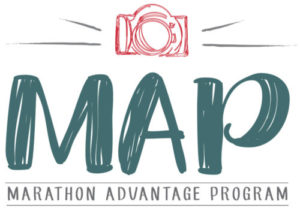In many ways Raymond Photography is an anomaly in today’s professional photography market. Rather than specialize, they offer a broad range of services; instead of reducing their size, they lease an 8,000 sq. ft. building; while a photography businesses with large billings typically rely on a staff of full-time employees, Anthony and Yvette use contractors as they are needed. This unusual photography business model is largely a consequence of the growth of their corporate photography sector.
“We had a home studio for 12 years, but as our commercial accounts grew, we needed more space. Much of our commercial work came to us because companies were looking for a photographer who knew film and lighting and how to correct shadows during the photographic process so that images didn’t have to be overworked. We were fortunate to find our space during a recession, because it was much easier to negotiate terms. We started with 2,000 sq. ft. and grew from there.”
Yvette adds that when a corporation hires a photography business for a huge, multi-day shoot, they don’t want to deal with a second shooter. “Anthony is the key employee,” she says, “so it works best for us to use contractors rather than have staff employees who must be paid year round.”
MAP is our biggest, strongest employee.
Because they are so aware of the advantages of hiring contractors rather than employees, Anthony and Yvette were quick to understand the benefits of the photography Marketing Advantage Program (MAP), and they are among its biggest boosters.
“We flat out tell people that MAP is our biggest, strongest employee. Given the economy and increased competition, you must constantly strive to make your photography business better, and there’s only so much you can master. It makes no sense to hire someone to market for you when you can benefit from Marathon’s expertise. They’ve been at this for a long time, and they know how to provide support for different kinds of businesses. We lean on them constantly. They give us ideas and shape our ideas, and this frees up our time to concentrate on income-producing activities.”
Yvette credits the printed materials they developed through the photography Marketing Advantage Program with creating exactly the kind of image they believe is necessary to be taken seriously by clients who have disposable income . . . whether they are families, schools or corporations.
“They show the quality of our work to its best advantage. Just adding our Teeny-Tiny Brochure to the letter we send to schools for our fundraisers has increased its success because it shows different styles of family portraits so they can see for themselves that we are professional photographers who know what we are doing.”
Paying it Forward
In spite of their busy schedules, Yvette and Anthony find time to coach and mentor new photographers or colleagues who are struggling in today’s economy. According to Yvette, a key ingredient for success in any business is becoming comfortable with talking to clients about money. “It’s a necessary part of business, and without a doubt, mastering sales techniques is the difference between success and failure,” she says.
Working with your spouse.
The couple also has good advice for other husbands and wives who work together: Make sure your roles are defined and respected, and determine when and why business can be discussed at home. “I’m the photographer and I handle the key business issues in that I make the final determination as to when we say yes or no,” Anthony notes. “Yvette manages the business, which includes support staff, photography marketing, sales and accounting.”
Yvette explains where she and Anthony draw the line on bringing business home: “It’s fine to comment about business issues at home unless it’s about a problem. Problems are tackled in the office, not at home.” Anthony gets the last word on this subject: “When two Italians are married and work together, it’s doubly important to have these rules!
